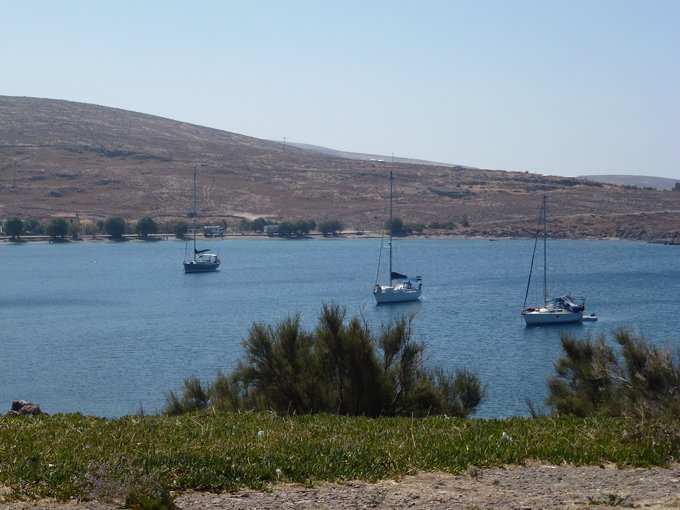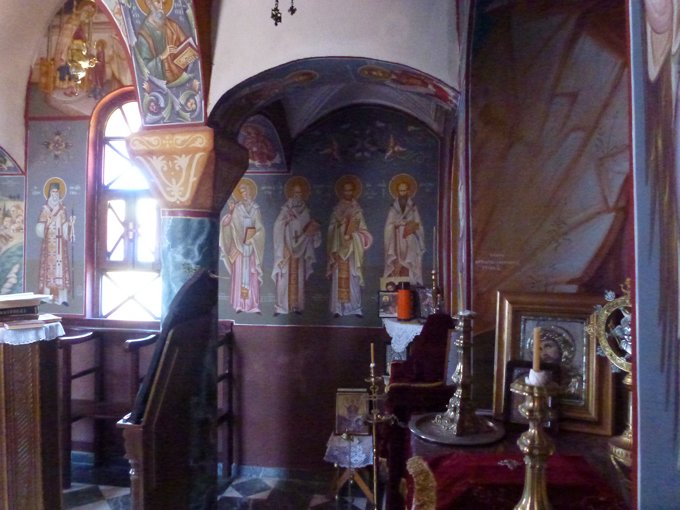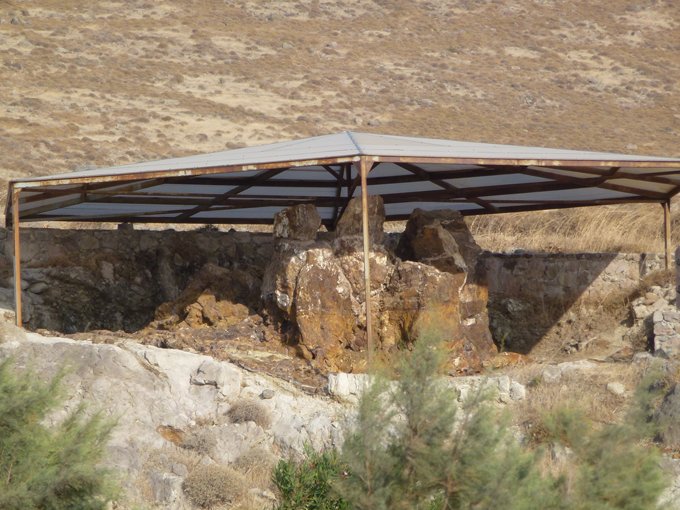39:12.51N 25:51.14E Sigri, Lesvos Island.

.Monday, 12th August, 2013.
Up by ten to seven and on our way out of the small harbour by seven twenty as the weather forecast for the day’s wind showed it was differently a good day for us to make the crossing all the way to Lesvos. Jim had considered splitting our journey by going north to a small island about fifty miles away but once we cleared the island the wind direction north was not possible so onward to Lesvos it was to be.
We covered 101 miles in eleven hours with a north wind which caused a small choppy sea with white water everywhere and Ariel banging down on nearly every sixth wave as we made our way across the Aegean Sea. We sailed the whole way with an average speed of 7.3 and a top speed of 9.3. We even sailed past the small island of Nisopi opposite the small town of Sigri and nearly into the beach area before we took our sails down and started the engine. Jim said he had never sailed with a wind so constant that he did not have to tack or motor to stay on course.
Two striped dolphin came and swam with us for a minute or two and disappeared as quick as they appeared.
Sigri is on the west coast and has an 18th century Ottoman castle and a beautiful church called Agia Triada. It was beautiful inside. We discovered a tank left from World War II just rotting away below the castle. While we were sitting having coffee at a small taverna a van came around the town selling everything you could need in your kitchen. Apparently this portable shop visits once a month.
Sigri has a status as a naval base but there is no evidence of it to us so the tourist development was discouraged but it does have a couple of small beaches which appear popular to us watching from Ariel. Due to the wind the evenings are cooler and the water a little chillier for swimming.
There are reported to be 11 million olive trees on Lesvos and its reputed to have the most productive oil bearing trees in Greece. The fruits can be cured for eating throughout the year or pressed for oil and then further pressed for soap and lanterns and then the pulp is used as fertilizer. The olive groves of Greece date back to 700 BC when olive oil became a valuable export. According to Greek legend Athena, goddess of peace and war planted the first olive tree in the Athenian Acropolis.
Jim is eager to visit Plomari as it is famous for being the ouzo capital and has five distilleries in operation!


















